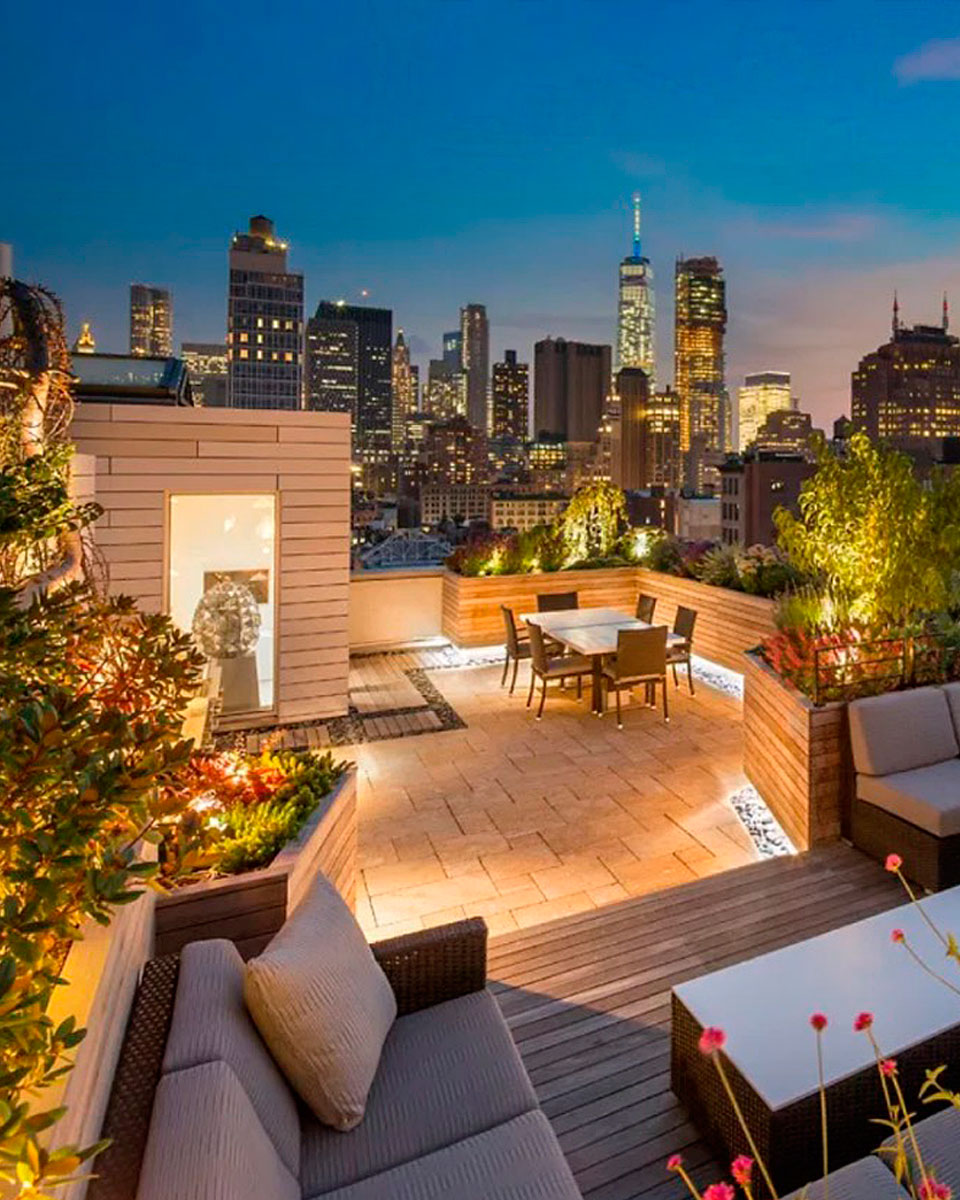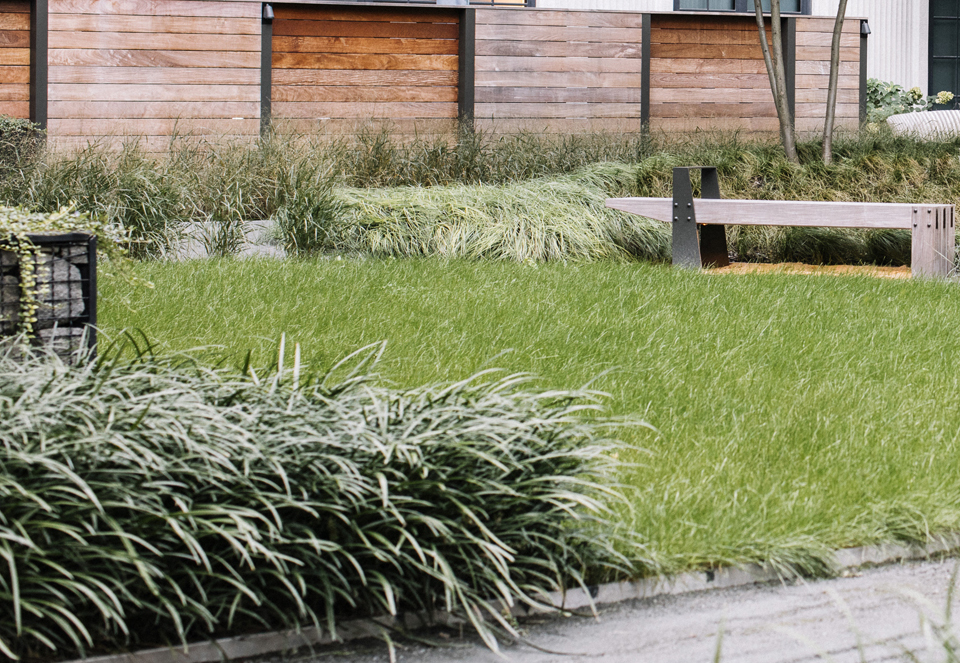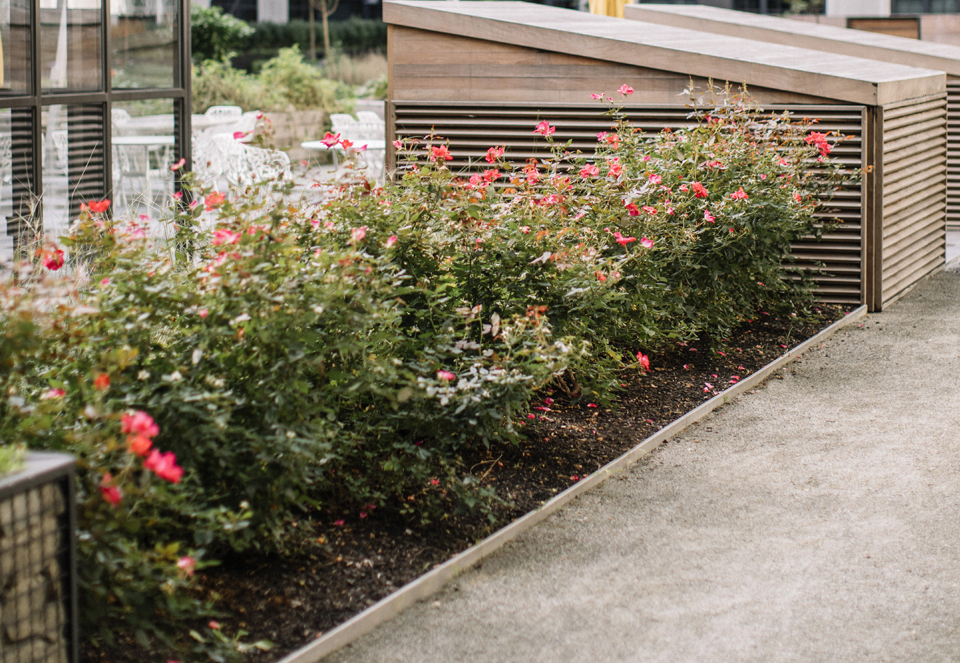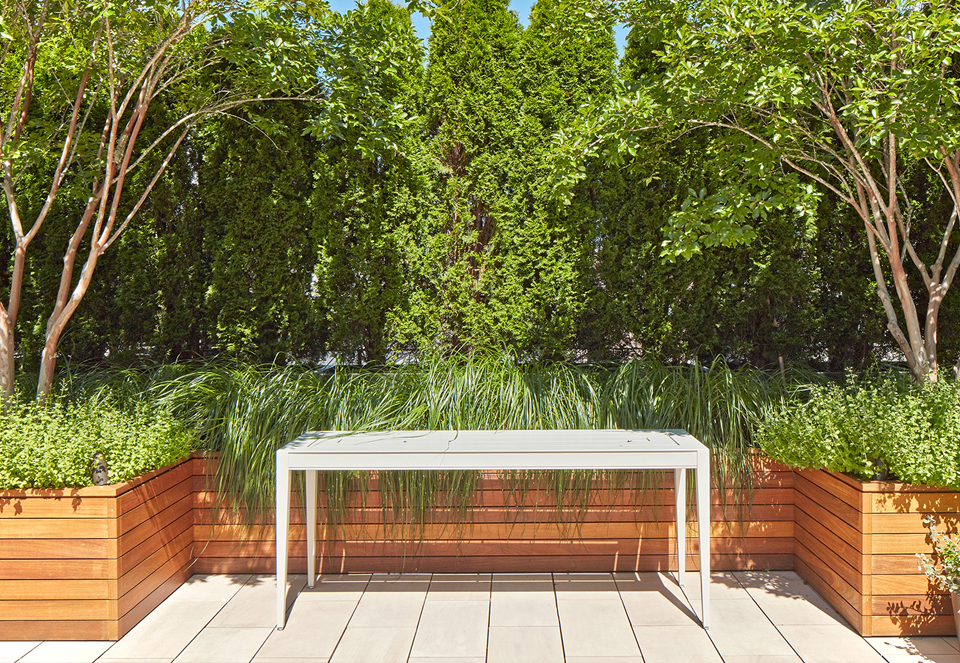Environmental quality in urban areas are getting worse by the minute. Green spaces are taken out to make way for concrete structures. Without enough verdant areas, cities and towns will have a hard time alleviating the urban heat island phenomenon and reducing air and noise pollution.
The need to control the negative effects of development has pushed new-generation builders, landscape architects, and urban planners to come up with solutions to preserve the optimum quality of the environment. And one option that they recommend is building a rooftop garden or roof garden.
What is a roof garden?
A roof garden is essentially a garden on the rooftop of a building, man-made green spaces on the topmost level of residential and commercial structures. Consisting of different plants, these verdant areas help improve a building’s aesthetics.
Rooftop gardens have been in existence for a long time now. The people of ancient Mesopotamia have grown trees and shrubs atop ziggurats. Some European homes in the olden days had roofs made with turf. And the Hanging Gardens of Babylon, one of the Seven Wonders of the Ancient World, are known to have tiered gardens with lots of vegetation.
Until the 20th century, having a rooftop garden equated to novelty and wealth. By the 1970s, the first green roofs were manufactured and installed in homes and commercial establishments.
Due to today’s urban landscapes, which is congested and has less green space, more residential owners and building architects opt to develop rooftop gardens. Question is, what roof garden ideas are ideal for a particular structure?

Rooftop Garden
Types of roof gardens:
Today’s roof gardens are classified into three main types, depending on their features and purpose:

Extensive Green Roof:
is a low-maintenance green roof garden that has a thin, light-weight growing medium. This type of green roof is characterized by its vegetation, which is often limited to sedums, mosses, herbs, small plants and flowers, desert grasses, and succulents.
Because it has a growing medium depth of around 3 to 6 inches, an extensive green roof is easier to install and cost-efficient, and generally doesn’t require an irrigation system to survive. It is ideal for stormwater management for flat or low-sloped roofs and retrofits.

Semi-Intensive Green Roof:
boasts a mix of both the intensive and extensive green roofs. It is characterized by a growing medium depth of around 6 to 12 inches to host a much richer ecology. Greenery in this type of rooftop garden consists of small plants, grasses, herbs, small shrubs, and groundcovers that require occasional irrigation and moderate maintenance.
A semi-intensive green roof is able to retain more stormwater than an extensive green roof and, at the same time, provides the potential for a formal roof garden effect. Its design makes it ideal for long-term care facilities, daycare play spaces, and urban picnic areas.

Intensive Green Roof | Roof Garden :
is more of a rooftop garden or sky park than anything else. This roof garden design is characterized by deep soils that have a growing medium depth of more than 6 inches. A variety of vegetation can be grown in an intensive roof garden, from small to large plants, shrubs, groundcovers, and even small trees.
An intensive green roof offers a great potential for highly creative designs and biodiversity. It can support small home gardens, playgrounds, full-scale parks, and even vegetable gardens. But this rooftop garden type also requires intensive care, with regular professional maintenance and advanced irrigation systems.
It’s understood that when a building has a rooftop garden, care and maintenance must be done regularly, especially if it is the intensive type. But does that mean that having a roof garden can be costly, or cause leaks and damage to structures?
Debunking myths about green roofs
Here are some common misconceptions about roof gardens:
Roof gardens are prone to leaks.
Unless the roof was haphazardly constructed, there is little evidence linking roof gardens to leaks. Fact is, they are known to protect the waterproof membrane of a building’s roof and shield it from UV light that can cause weathering. In short, if installed properly, rooftop gardens can prolong the life of one’s roof.
Roof gardens can cause structural issues.
For new buildings, architects and structural engineers already take into account the load requirement of green roofs even during planning. For retrofitted green roofs, however, reinforcements must be built to handle the additional load needed to develop a roof garden, as well as live loads like rainwater and snow. Experts are there to thoroughly evaluate and recommend the best way to install a rooftop garden on an existing structure.
Roof gardens are expensive and high-maintenance.
Creating a rooftop garden seems costly if one doesn’t know where to start. That’s why a consultation from professionals–architects, landscape designers, and structural engineers–is needed. They can offer the best roof garden design ideas and solutions for the short and long term.
With regards to maintenance, take into consideration the types of plants and seasonality to determine the substrate and drainage systems to use. Professionals will most likely recommend thicker substrates that can absorb more water and a drainage system that can store water and release it during warmer weather. This way, the need for irrigation is greatly reduced.
Roof gardens are only for aesthetic purposes.
True, rooftop gardens add beauty to a building, but they do more than that. Green roofs alleviate the urban heat island effect by reducing surface temperatures through natural insulation. They also improve the air quality of the surroundings as plants remove the carbon dioxide in the air and release oxygen. Extensive green roofs can offer habitats for diverse birds and other animals because of the variety of trees and plants present. Moreover, a rooftop garden makes roofs useful as grounds for social activities such as play and picnics, and even for relaxation.
Benefits of having a Roof Garden
So why should one consider having a rooftop garden in their homes and buildings? For a number of reasons:
Roof gardens help create wonderful memories with friends and family.
Whether for a picnic or a stroll, rooftop gardens are ideal spaces to spend quality time with other people. The greenery provides a lush backdrop for photos and videos to remember one’s day.
It provides a personal nook for me-times.
When one needs some time out from anything that causes stress, a trip to the green roof would be beneficial. It’s been proven that green is a relaxing color that brings about positive impacts on mental and psychological well-being. Surrounding oneself in verdant surroundings can ease tension and anxiety.
Green spaces can help people recover from sickness faster.
Long-term care facilities have rooftop gardens where patients can while away their time while on rehabilitation. The color green has a healing and soothing effect, and just being around it can help with recovery and renewed energy.
Green roofs can cultivate one’s green thumb.
Semi-intensive and intensive green roofs make great spaces to grow different plants. One can even create a rooftop vegetable garden here to plant herbs and leafy greens that can be used for cooking.
Rooftop gardens offer breathtaking views.
Just imagine being 30 feet high above the ground but still be wrapped in beautiful scenery. That’s exactly what a rooftop garden can offer. Green roofs also complement the city skyline and make vistas all the more amazing.
Green roofs give bragging rights to a resident or building owner.
People love green spaces, and a rooftop garden that’s well taken care of will leave them in awe. They will also love the idea that the structure is environmentally friendly and offers biodiversity. Also, since they are able to reduce heat, green roofs help lower energy costs spent on air-conditioning. And because green roofs protect the actual roof’s surface, there’s little need for much maintenance.
Having a rooftop garden offers many advantages to residential and commercial buildings, and to the environment as well. It may seem like a huge investment to create one but, in reality, the benefits outweigh the costs. When installation has been completed, one will realize that it’s worth having a rooftop garden–a place to enjoy calm, freshness, relaxation, and beauty.
